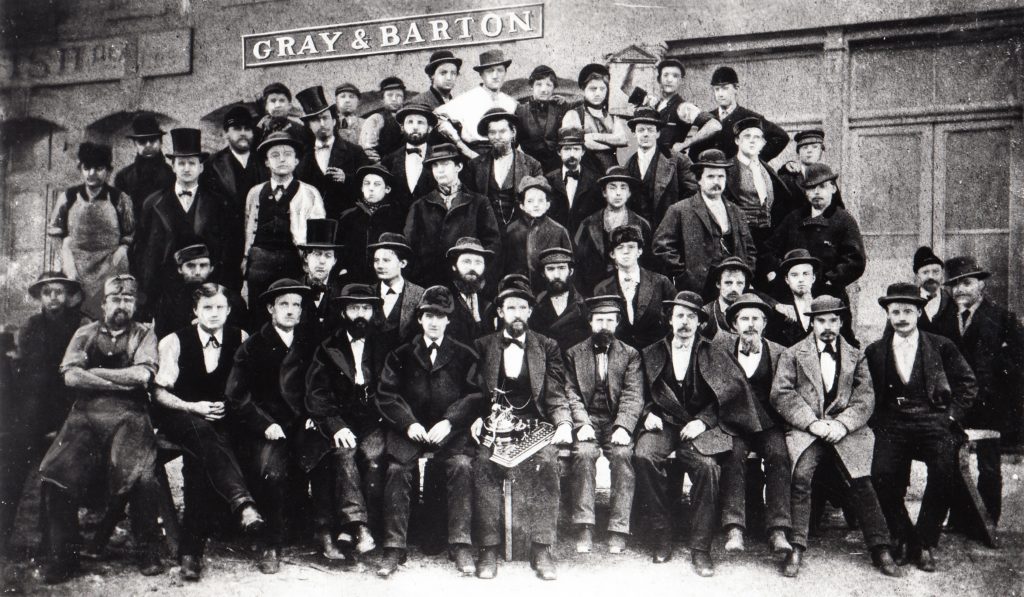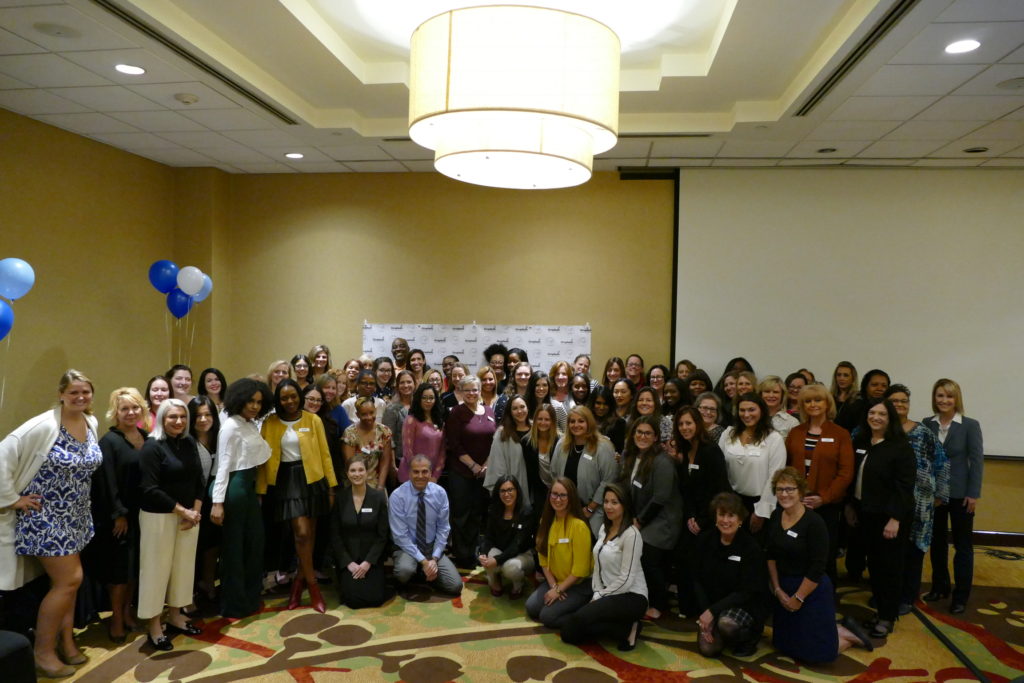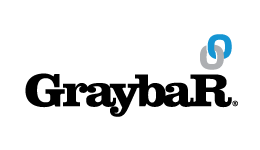Infrastructure for Life
ACT I: Graybar—Hot (as in cool) since 1869
Quick. Name a Fortune 500 company that’s an electrifying place to work and 100 percent owned by its employees. Here’s a big hint: It’s called Graybar. Doesn’t ring a bell? That’s not surprising. We don’t spend a lot of money tooting our own horn. But we do have thousands of employees and dozens of offices all over North America. And our customers know us, depend on us and look to us for counsel and advice. To us, that’s what really counts.
It’s been that way for a long time. From its inception in 1869, the company has mirrored the rapid growth of electrical power in the country. If you think today’s latest technological marvels are cool, imagine what it was like to first experience the electric light (the “hairpin in the bottle” as the incandescent was called). Forget the candles. Flip a switch and let there be light. Edison may have tamed the beast in his lab, but we helped put it everywhere else. As a matter of fact, without electricity, the business wouldn’t exist.
Elisha Gray—Idea Man
Company co-founder Elisha Gray was kind of the Steve Jobs of his day, eventually holding more than 70 patents. Just like Jobs, Gray was always looking to develop new and better ways of doing things. His innate curiosity led him to build a working model of a telegraph transmitter before he was 10.
He studied electrical mechanics at Oberlin College in Ohio (supporting himself doing carpentry) and became a professor. While there, in 1866, he worked out his first great invention—the “self-adjusting relay,” an instrument regulating automatically the motions of the telegraph sounder, (basically the device that made the audible clicks). His design compensated for the variation in pulse strength of the Morse Code dots and dashes used in the messages. Six years before being named Chairman of the First World Electrical Congress in 1893, Gray invented the “telautograph,” a prescient FAX machine that could “remotely transmit handwriting through telegraph systems.” He also conceived the telephote, a primitive closed-circuit television.
Gray thought up the stuff in his fertile brain and then relied on others to make the models of his experiments. It probably isn’t too far-fetched to think that when Elisha walked in with yet another new idea, he commanded the same level of attention Steve Jobs would at an Apple unveiling.
Royalties Perhaps?
Jobs may actually have owed Gray a debt of gratitude for being a trailblazer in voice communication—especially when it came to launching Apple’s bestselling iPhone in 2007. That’s because there’s good reason to believe that Gray might be the rightful inventor of the telephone. Historians and Alexander Graham Bell may debate that point, but Gray filed with the U.S. Patent Office the same day as Bell an apparatus to “transmit the tones of a human voice through a telegraphic circuit.”
There have been rumors of shenanigans between Bell, attorneys and clerks in the Patent Office. And Gray did go so far as to sue, but he eventually lost his case.
Unlike his sometimes-squirrely peers, he was apparently pretty down-to-earth. Even The National Magazine wrote in 1893, “He has none of the eccentricities which are conspicuous characteristics of some of the other great inventors of the age, and when not absorbed in his professional work is delightfully genial and companionable.”
An 1873 company photo shows a proud staff surrounding Gray and his printing telegraph machine. (From the picture you might have thought they manufactured hats of all styles, but it’s the machine that’s front and center.)

Vision for the Future
Gray’s ever-curious mind didn’t stop with the company’s main business. Just a year before he died in 1901, he published a three-volume set of books called Nature’s Miracles that might well have harbingered the mass production of appliances and spurred the use of electricity in the home.
By 1915, in addition to distributing electrical supplies, Western Electric was selling branded washing machines and vacuum cleaners, to be followed by sewing machines, clothes irons, fans, kitchen ranges, percolators, toasters and dishwashers. Everybody wanted everything electric right now. It was kind of like having to have the latest and greatest iPhone the minute it comes out.

ACT II: Becoming Graybar
Graybar actually became Graybar in 1925, as a wholly owned Western Electric subsidiary. It all came about pretty much because of too much success for what was then the Western Electric supply department. In a separate department, Western had long manufactured phones for American Bell. (Yes, the former sworn enemy. It’s complicated, but suffice it to say both companies needed each other.)
At the beginning of the 20th century, a schism began developing between AT&T (the Bell people), and Western Electric. And in 1921, Western’s telephone manufacturing and product marketing operations split into two main divisions: the telephone department (which made phones for Bell), and the supply department (which distributed electrical equipment to non-Bell customers).

Things didn’t improve until Western Electric was ordered by AT&T’s new president to give up its supply business as soon as possible. Long story short, Graybar Electric Company began operations on December 11, 1925, as a wholly owned Western Electric subsidiary. Western wanted to sell the company, but it would take three years to find the right buyer—Graybar employees.
Graybar common stock was initially priced at $100 per share, an offer so good Graybar employees couldn’t turn it down. Especially when it included a pledge from Western to refund the full purchase price, plus 6 percent annual interest, to any employee who invested in the stock and later wanted to sell for any reason. The guarantee was good through the end of 1933.
That was more than fortuitous. Because nine months after Graybar employees bought the company, the Great Depression hit. By 1932, sales had dropped 67 percent, and the company was losing money. Layoffs and attrition reduced the staff, but through it all, Western went out of its way to keep Graybar afloat.
Adding products (featuring new technologies such as radio, hearing aids and fluorescent lighting), Graybar survived and climbed back into profitability. In 1939, Graybar stock was split five-for-one, reducing the price to $20 per share. It’s remained the same ever since. That, along with the opportunities for employees to earn cash and stock dividends, “is a key advantage of working for an employee-owned company like Graybar,” said Kathy Mazzarella, Chairman, President and CEO.
On June 30, 1941, Graybar bought back the last of its stock held by Western Electric, making the company 100 percent employee owned. Ever since that time, it’s paid cash dividends of at least 10 percent annually.
War, Women and Opportunities
During World War II, Graybar’s business was devoted almost entirely to furnishing material and equipment for use in the war effort. It managed to do it all efficiently and effectively despite 25 percent of the company’s employees enlisting in the military for service.
How? Pioneering women replaced the men who became soldiers. They were the first Graybar women to advance beyond secretarial, typing and clerical positions. And when the men came home to a booming post-war economy, many women stayed.
The late 20th century brought with it an abundance of changes in technology and workplace diversity, with younger employees, and more women. Kathy Mazzarella herself was hired as a customer service representative in 1980.
Mazzarella became the company’s first female vice president in 1998. Two years later, Juanita Hinshaw was named Senior Vice President and Chief Financial Officer, and became the first female board member. Mazzarella was appointed to the board in 2004 (becoming President and CEO in 2012 and Chairman in 2013), and Beverly Propst, Senior Vice President of Human Resources, has been a board member since 2009.
WINGS (Women Influencing Graybar’s Success) has served as a platform to give women at Graybar the opportunity to connect through networking, professional development and mentoring since 2008. Many WINGS chapters also use the group as a platform for charitable giving and volunteer work.
As Graybar embraces diversity, change and innovation, it has never lost sight of its core values.

ACT III: Still Committed to Dynamic Opportunities
In 2008, on the heels of a technological explosion and Graybar’s own $100 million investment to upgrade its software and computers earlier in the decade, company officials reiterated the core principles: “Integrity, Employee Ownership, Long-term View, and Customer Focus are ingrained in the work Graybar does, and every employee now and in the future, clearly needs to understand that’s what we stand for and what’s expected of them,” said President, Chairman and CEO Bob Reynolds at the time.
Graybar’s business model of employee ownership speaks to how we take pride in our company and demonstrate loyalty to the company and to one another. We win by working together toward common goals and by having a true stake in the performance of the company.
Graybar never has put much stock in resting on its laurels. Its rich history of innovation speaks to the continuing effort to take exciting chances, lead rather than follow, and create an atmosphere where new ideas are embraced and encouraged.
A New Generation of Ideas
Today, Graybar continues to offer dynamic opportunities to employees. One of the company’s most highly recognized programs is the Rutgers-Graybar Supply Chain Management program. Initiated in 2005 by Mazzarella, it’s been described as a “mini-MBA” with a focus on preparing Graybar’s leaders for future advancement. “(The) program gives us an effective way to identify leaders who demonstrate our core values and equip them to succeed in an increasingly complex and dynamic business environment,” Mazzarella said. “By developing leaders from within the company, we can sustain Graybar’s long track record of success and strengthen our employee ownership culture for future generations.”
Likewise, the Graybar Emerging Leaders program creates a new path for up-and-coming leaders to gain exposure to current leaders and explore challenges facing the company. Future leaders have the opportunity to learn from mentors and “get a taste” of myriad aspects of how the company functions.
“We must equip our employees, our industry and our communities with the tools and the skills that they will need–10, 15, 20 years from now–to deal with new challenges and take advantage of emerging opportunities,” Mazzarella said.
“As distributors, we all have similar products, we all have facilities, we have transportation methods, we have people. The difference really is that individual that takes care of that customer every day. That is the one thing that you cannot reproduce as a competitor. If you have a good person, you give them the right digital tools to enable a good value proposition for the customer and a good customer experience, nobody can touch him.”
Nothing Taken for Granted
Ideas can come from anyone and everywhere, such as the new Graybar Innovation Lab at Research Park on the campus of the University of Illinois, less than half day’s drive from corporate headquarters.

“(The iLab) will play a vital role as we explore new ways to develop industry-leading digital capabilities,” said Mazzarella. “We are excited to collaborate with University of Illinois’ faculty and students, who will help us solve the challenges of today, while creating new opportunities for tomorrow. I’m excited to see how this collaboration will drive supply chain innovation and raise the bar for our entire industry.”
Not only does Graybar raise the bar for the industry, we lead by example in giving back to our communities. Graybar’s history is full of stories about the company and employees on their own making a difference where they live and work. Empowering Our Communities will strengthen that commitment to the communities we serve. As part of our 150th anniversary celebration, we’re looking to contribute 90,000 hours of volunteer service and $1.5 million to make our communities stronger in 2019. And that’s just the beginning of a new era of corporate citizenship for Graybar and our employees.
We’re able to make a big difference because we’re part of everyone’s daily life, whether they know it or not. It’s really been that way since Elisha Gray wrote Nature’s Miracles.
Reimagining Electricity in the 21st Century
Electricity revolutionized 20th century American culture, and it’s still doing so today—but in very different and dynamic ways. Think of it as an Infrastructure for life. The alarm goes off in the morning, the lights are switched on, the toast pops up, email is checked, texts are read, the news is viewed, the car is driven. All that plus a whole lot more doesn’t just happen. It isn’t magic.
Or is it?
To most people, the answer is “yes.” They don’t know what enables them to do what they do every day. But we do. We provide the products, solutions and services that help make a lot of life happen.
It’s exciting to be part of that now. And even more exciting to imagine what’s coming next.



